The Pug
[ad#Commission Junction Entirely Pets]
THE PUG
The Pug is a small breed of dog with a wrinkly, short-muzzled face, and curled tail. They have been described as multum in parvo (“much in little”), referring to the Pug’s huge personality and small size. Known in Ancient China as “Lo-Sze”, they were possibly ancestors of the Pekingese and King Charles Spaniel. (3)
ORIGIN AND HISTORY
The Pug is one of the oldest breeds of dogs and has been around since before 400 BC. Pugs were bred to adorn the laps of the Chinese sovereigns during the Shang dynasty (before 400 BCE). In East China, they were also known as “Foo” (similar to ceramic dragons or Foos with their bulging eyes.) There is significant historical evidence to believe that Pugs are actually the Foo dog depicted in the Shang Dynasty (1766-1122 BC) artwork. Emperor Qin Shi Huang, the first Emperor of China, destroyed all records, scrolls and art related to the Pug during his reign which lasted between 221 BCE–210 BCE. (3) References to Pug-like dogs date from as early as 551 BCE by Confucius. The Pug’s popularity spread to Tibetan monasteries (5), then to Japan, and finally Europe. Pugs were first imported in the late 16th and 17th centuries by merchants and crews from the Dutch East India Company.
Pugs became popular in Europe when Prince William II of Orange, from the Netherlands, who owned Pugs became the King of England (5) in 1688.During this period the Pug may have been bred with the old type King Charles Spaniel, possibly accounting for the pug characteristics of the English Toy/King Charles Spaniel.They were popularized in Western Europe by the House of Orange and the House of Stuart of England, Ireland and Scotland and remained (3) very popular in the Royal Courts of Europe until Victorian times. (4)
Pugs have also influenced world events. A Pug named Pompey saved the House of Orange in 1572 by barking to notify Prince William that Spanish assassins were approaching the castle, and became the official dog of the House of Orange for it’s bravery. The Kennel Club recognized Pugs in 1873 and they were the breed of choice of Queen Victoria. The Queen was personally involved in breeding them and many modern Pugs have royal origins.
Pugs were painted by Goya in Spain and in Italy they were dressed in matching jackets and pantaloons sitting next to coachmen. They were used by the military to track animals and people, and were also employed as the guard’s dogs. Before her marriage to Napoleon Bonaparte, Joséphine had her Pug, Fortune, carry concealed messages to her family while she was confined at Les Carmes prison. The pet was the only recipient of visiting rights. In 1789, a Mrs. Piozzi in Italy wrote in her journal, “The little pug dog or Dutch mastiff has quitted London for Padua, I perceive. Every carriage I meet here has a pug in it.”
The English painter William Hogarth owned a series of Pugs, to which he was devoted. In 1745 he painted his self-portrait together with that of his Pug, Trump, now in the Tate Gallery, London.The Pug arrived in the United States in the 1800’s and was soon making its way into the family home and show ring. (3)
Pugs have featured in television and film, including Frank the Pug in the film “Men in Black”, its sequel, and animated series. Other films featuring the breed include The Adventures of Milo and Otis, Disney’s Pocahontas, 12 Rounds and the 2006 film Marie Antoinette.Celebrity Pug owners include financial talk show host and best selling author Dave Ramsey, broadcaster Jonathan Ross, actress Jessica Alba, actor Hugh Laurie, fashion designer Valentino Garavani, footballer Zlatan Ibrahimovic, actor Gerard Butler, actress Jenna Elfman and musician Rob Zombie.(3)
APPEARANCE
They have fine, glossy coats which can be fawn, apricot, silver or black. (3)(5)There is also the rare white pug. A silver coat is characterized by a very light colored coat, absent of black guard hairs. A silver Pug typically has a very dark head, with no clear delineation at the mask, and dark forelegs. Traditional colors are fawn or black. There should be a contrast between the fawn color, the mask and the trace. Any color other than fawn or black is disqualified in the show ring. The markings are clearly defined. The trace is a black line extending from the back of the head to the tail. (3)(1)
A Black Pug Puppy
In paintings and engravings of the 18th and 19th centuries, pugs appeared with longer legs and noses, and with cropped ears. The modern Pug’s appearance probably altered after 1860 when a new wave of Pugs were imported directly from China. These Pugs had shorter legs and the modern style Pug nose. There are two different types of a Pug’s ears, “rose” and “button”. “Rose” ears are smaller than the standard style “button” and are folded with the front edge against the side of the head with preference going to “button” style Pugs. (3) The ears are thin, small, soft, like black velvet. (5) Ear cropping was outlawed in 1895.(3)
Modern breed preferences are for a square, cobby body, a compact form, a deep chest, and well-developed muscle. Symmetry is important. The legs are very strong, straight, of moderate length, and are set well under. The feet have well split-up toes, and black nails. The lower teeth normally protrude further than their upper, meeting in an under-bite. (3) The tail curls tightly over the hip.(3) The Pug must have hard muscle, weighing between 14 to 18 pounds. (5) They’re not very large: males only measure 14 inches at the shoulder, while females are slightly smaller (4)
The head is large and round, with no indentation of the skull. The eyes are dark, very large, prominent, globe shaped, soft in expression, and, when excited, full of fire. The wrinkles are large and deep. The muzzle or mask, ears, moles on cheeks, thumb mark or diamond on forehead, and the back trace should be as black as possible. The mask should be black. The more intense and well defined it is, the better. The trace is a black line extending from the occiput to the tail.(5) The muzzle is short, blunt, square, but not upfaced. A Pug’s bite should be very slightly undershot. The neck is slightly arched, strong and thick . The short back is level from the withers to the high tail set. The legs are very strong, straight and moderately long. Dewclaws are generally removed.
BEHAVIOR
Strong willed but rarely aggressive, the Pug is suitable for families with children. They are very fond of children and sturdy enough to play with them. They can be quiet and docile but also vivacious and teasing. They make good watchdogs, as they are always alert but can be yappy.(3)(4) The Pug has been bred to be a companion dog. They love to be around people and enjoy just sitting at your feet or even better, on the couch with you. They are very calm dogs and do well with other pets, children and other adults. They are an even-tempered breed, exhibiting stability, playfulness, great charm, dignity, and an outgoing, loving disposition. (5) They also don’t require a lot of space.(4) They’re friendly and intelligent and will quickly bond with people. (4) They are recognized for their outgoing, loving dispositions. The pug also excels in the show ring. (5)
They enjoy going for long walks and are very easy to train, although they quickly become bored with repetitive training. New areas to explore and new challenges are important to keeping your Pug interested and learning. (3) Pugs are very people orientated – they love to love and be loved! They thrive on human companionship, so don’t leave your Pug alone for long periods. Pugs don’t seem to realize that they are small dogs, so care must be taken to keep them out of harms way. They are completely naive about cars.
With patience and understanding, Pugs are quite trainable. Never yell, scream or hit your Pug. They do best with positive reinforcement and the best way to house train a Pug, is to praise it every time it does its business outside.There is little personality difference between the two colors or between the personalities of male and female dogs. (1) They can be difficult to train because Pugs are stubborn, independent and small. And they’re also cute.(2) You’re probably asking yourself “how does cute have anything to do with it”? The answer is simple really…Pug owners often think Pugs are cute even when they’re not doing what they’re supposed to do. For example, you’re trying to teach your Pug to ‘come’, and he just sits there and tilts his head when you give the command. What does the typical Pug owner do then? He, or she says “Look how cute”. What will you train your Pug to do if this keeps happening? You’ll train your Pug to tilt his head when you say ‘come’. The truth is that training a Pug to do anything depends as much upon you as the owner, as it does your Pug.(2)
Generally they’re very loving, loyal and extremely intelligent dogs. They are not usually prone to being extremely active or very lazy, rather they are a steady, intermediate energy level, perfect for families. They are excellent companion dogs for people that stay home during the day.(4)
CARE
Although Pugs have short hair, they require a lot of brushing. Brushing will help keep the hairs off your clothes, as Pugs do shed. Ears need to be checked and cleaned, the deep wrinkle over the bridge of the nose should be wiped with a warm, damp facecloth. Pugs hate having their nails cut, so should be taught from an early age that this is not as scary as they think. Some people have found that it is easier to grind the nails down with a dremmel tool than to cut it. This helps reduce the chances of cutting the quick, which would make the nail bleed. It’s best for two people to cut the nails – one to hold the dog while the other cuts or grinds the nails. Rather do one paw a day than all at once. (1) Different coat types shed to varying degrees, but they all shed quite a bit year round. Fawns, which have both an undercoat and an overcoat, are the most notorious for shedding. Regular coat grooming can keep the shedding down.(3)
HEALTH
They can suffer from a variety of health issues, including overheating, obesity, pharyngeal reflex and two fatal conditions which are necrotizing meningoencephalitis and hemivertebrae. In addition, care must be taken by their owner to clean the folds of skin on their face.(3)
Pugs need to be kept in moderate climates and temperatures, and do not do well in either very hot or very cold climates unless they are kept indoors. Wet weather can also be problematic for the Pug, as they have difficulties with respiratory problems due to their short nasal passages(4)Pugs love to play and go for walks. Take care not to let them get too hot on hot days. (2) Pugs must be kept out of hot or cold weather, as they are very susceptible to respiratory problems and breathing issues. When exercising or running with Pugs, it’s important to watch for any signs of wheezing or breathing troubles and immediately stop the dog from continuing on with the activity until their breathing is again under control. (4) They have compact breathing passageways, leaving many unable to breathe properly or efficiently or their ability to regulate their temperature through evaporation from the tongue. A pug’s normal body temperature is between 101 °F (38 °C) and 102 °F (39 °C). If the temperature rises to 105 °F (41 °C) they are no longer able to cope with cooling themselves and their oxygen demand is greatly increased, and require cooling down immediately. Should the temperature reach 108 °F (42 °C), the internal organs begin to break down at a cellular level which can lead to severe long term health issues or even death.(3)
Pugs love to eat, so please watch your Pugs weight. Obesity increases the chances of serious health problems.
Pugs have large, expressive eyes and a wrinkled face with a long tongue. Improper care of the wrinkles may sometimes cause adverse health effects. As they have many wrinkles in their faces, owners normally take special care to clean inside the creases, as irritation and infection can result from improper care. Sometimes the wrinkles rub on the eye itself causing constant pain and tearing from the eye and they need to be surgically resected or “tucked.”
Pugs are prone to eye problems such as inflammation and ulceration of the cornea. Pugs have slightly protruding eyes and this puts the eye itself at more risk to infections and problems. Tearing and weeping is common with Pugs and can often be an indication of more severe eye conditions.(4) They are susceptible to eye injuries such as puncture wounds and scratched corneas and entropion.[2] If your pug is attacked or hit by a car, the eyes can often pop out of their sockets! This is a veterinary emergency called proptosis and the eye must be kept moist with wet cotton wool and the dog taken to the vet immediately.
Pugs that live in dry climates with a lot of UV radiation are also prone to “pannus” which is a black membrane growing over the eye in the body’s attempt to protect the eye from irritation. This can lead to blindness, but is very easily treated with special eyedrops that contain cortisone or cyclosporin daily.
They can also suffer from necrotizing meningoencephalitis (NME), an inflammation of the brain and meninges, that occurs in Pugs and other small breed dogs such as the Maltese and Chihuahua. Necrotizing meningoencephalitis is also known as pug dog encephalitis (PDE). There is no known cause or cure for NME, although it is believed to be an inherited disease. All dogs usually die or are euthanised within a few months after the onset of clinical signs, which usually occurs anywhere from 6 months to 7 years of age. (3)
This breed, along with other brachycephalic dogs (e.g., boxers, bulldogs), are also prone to hemivertebrae. The screwtail is an example of a hemivertebrae, but when it occurs in other areas of the spine it can be devastating, causing such severe paralysis that euthanasia is a serious recommendation. The condition occurs when two parts of the spinal vertebrae do not fuse properly whilst a young Pug is still growing, resulting in pressure being placed on the spine. Hip Dysplasia is a major problem for the breed, with 63.8% of pugs being affected according to a survey performed by the Orthopedic Foundation for Animals, and they were ranked 2nd worst affected by the condition out of 157 breeds tested. (3)
The Pug, like other short-snouted breeds, has an elongated palate. When excited, they are prone to “reverse sneezing,” where the dog will quickly, and seemingly laboriously, gasp and snort. “Reverse sneezing” episodes are usually not harmful to the Pug and resolve themselves. Massaging the dog’s throat or covering its nose in order to make it breathe through its mouth can often shorten episodes.
Pugs are more susceptible to Demodectic mange, also known as Demodex. This condition is caused by a weakened immune system, and it is a minor problem for many young Pugs. This causes them to catch diseases much more easily than regular dogs do. It is easily treatable although some are especially susceptible and will present with a systemic form of the condition. This vulnerability is thought to be genetic, and breeders avoid breeding dogs who have had this condition. (3) Allergies and skin conditions and rashes are common in Pugs but can usually be managed with regular bathing and grooming and good hygiene. Skin allergies may require antihistamines either in a shot or pill form. (4)
Pugs usually have very small litters and may need Cesarean sections to be able to give birth. They very rarely are able to whelp without assistance, so it is important to keep in constant contact with your vet when your female is close to having puppies.
REFERENCES
1. http://www.pugclubcapetown.co.za/breed.htm
2.. http://pugvillage.com/pugtraining_main.htm
3. http://en.wikipedia.org/wiki/Pug
4. http://www.livingwithadog.com/pugs.htm
5. http://www.akc.org/breeds/pug/
6.http://www.pugslife.org/forum/topics/show-quality-pug?commentId=772342%3AComment%3A46451
7.http://www.ehow.com/how_2341564_clean-pugs-face.html
8.http://www.natural-dog-health-remedies.com/dog-heat-stroke.html
9.http://www.marvistavet.com/html/hemivertebrae.html

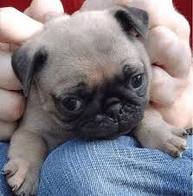
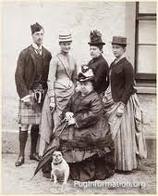
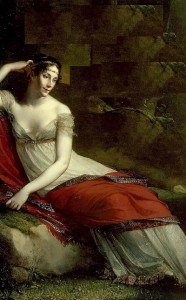



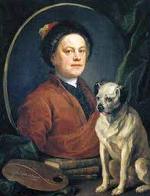
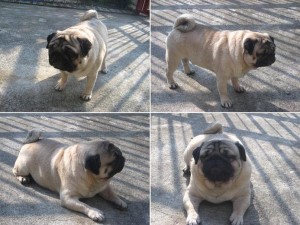


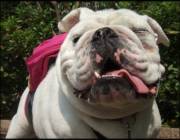

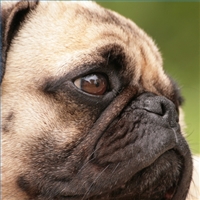
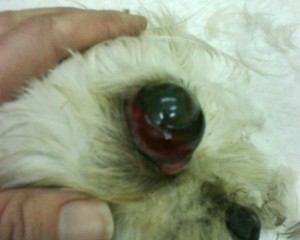
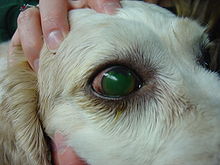
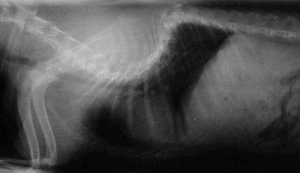
Leave a Reply
You must be logged in to post a comment.